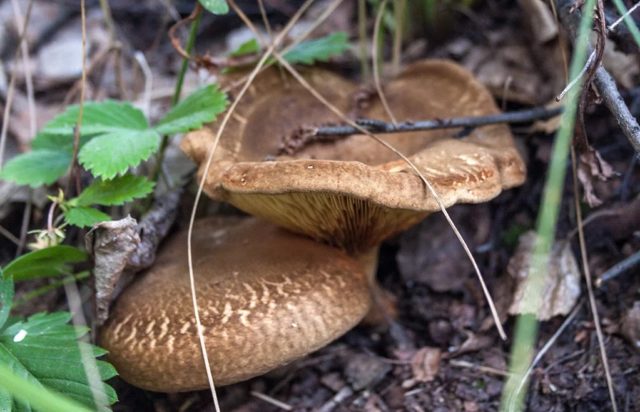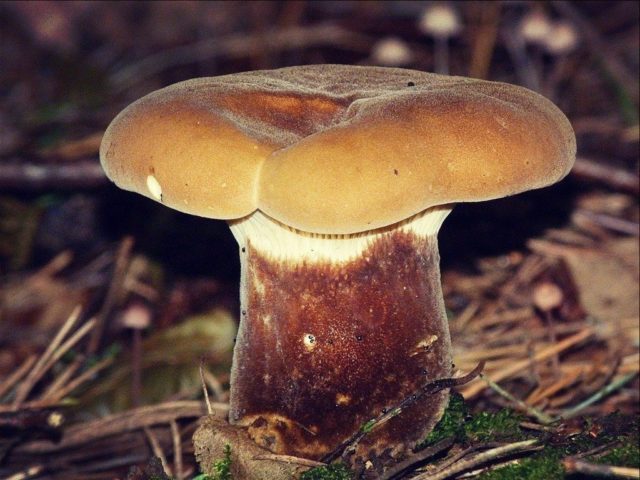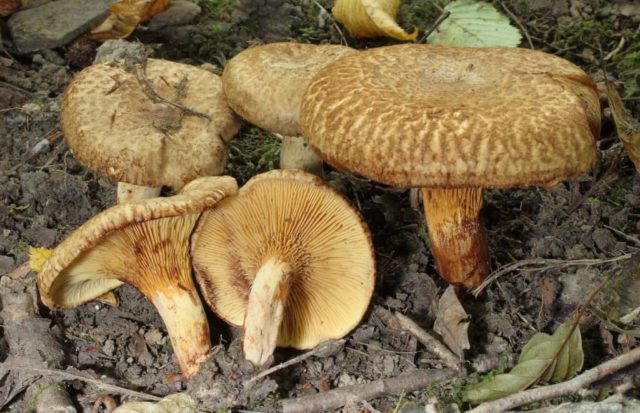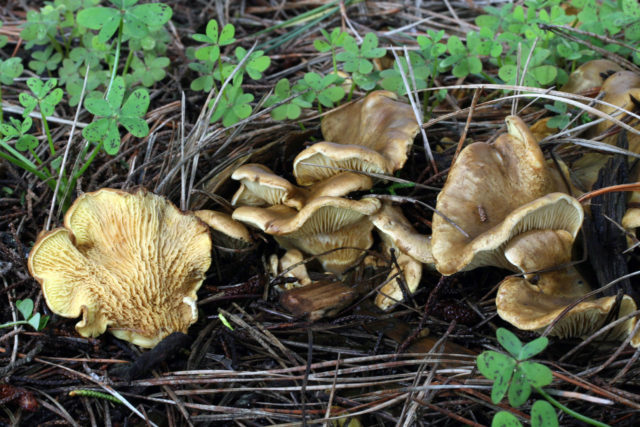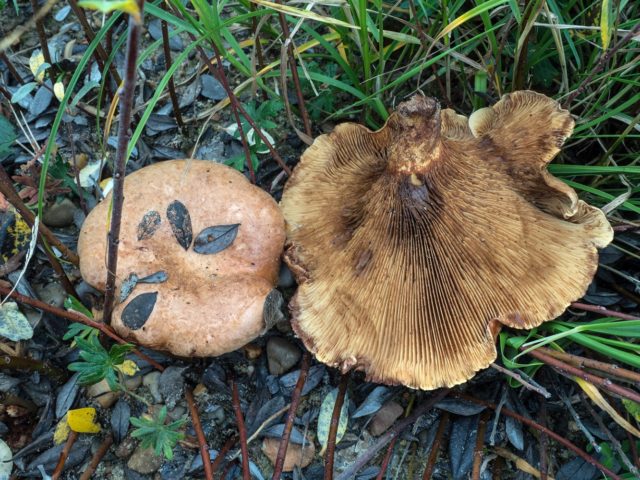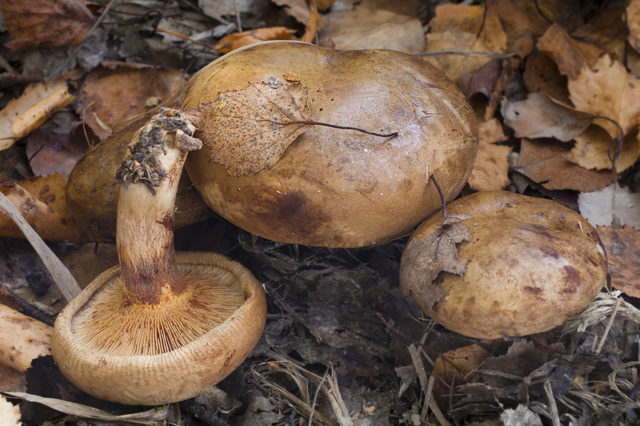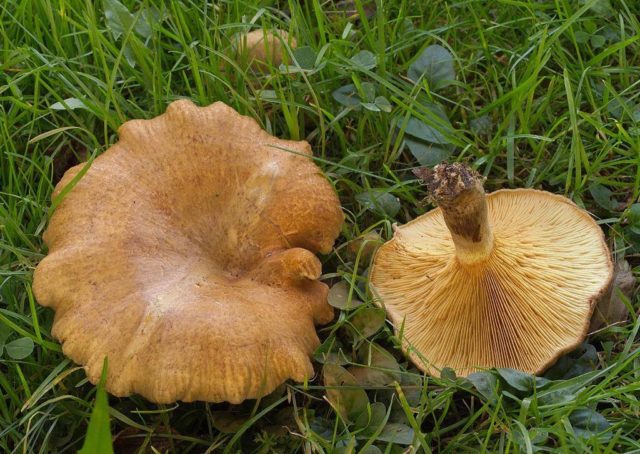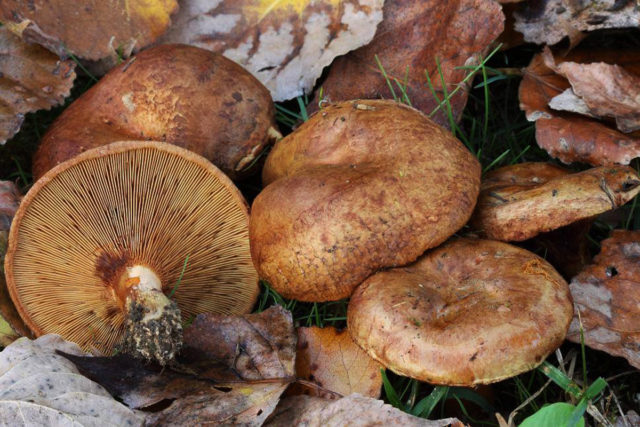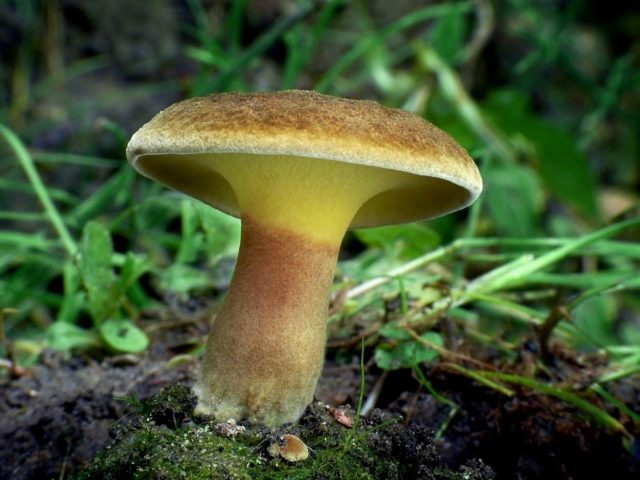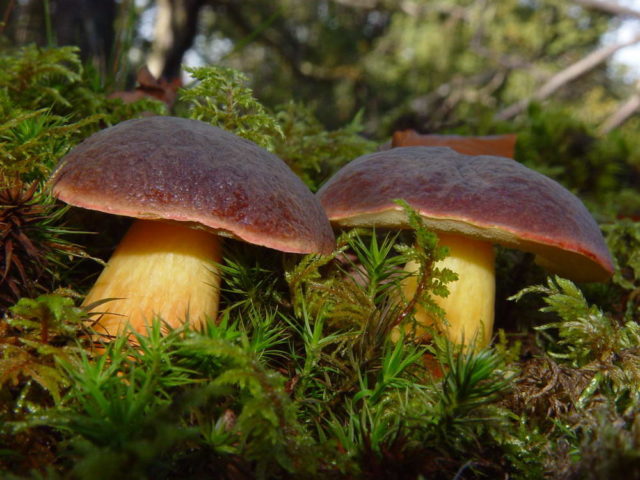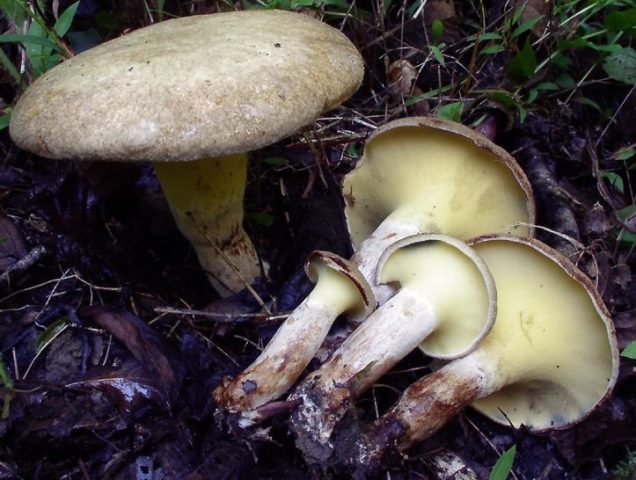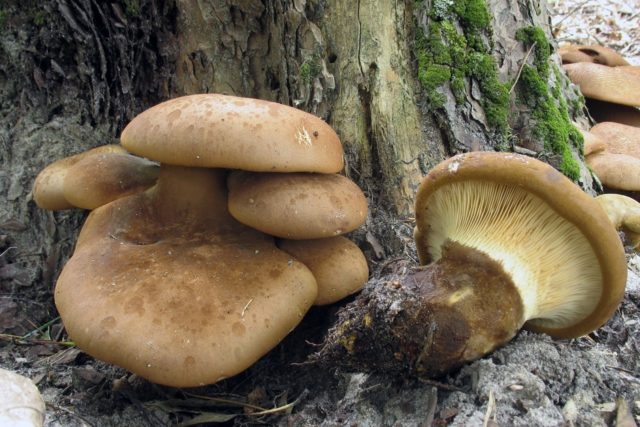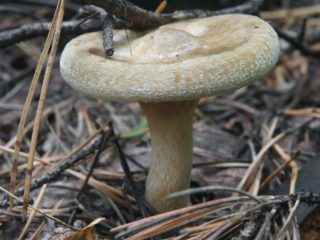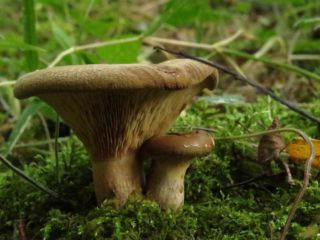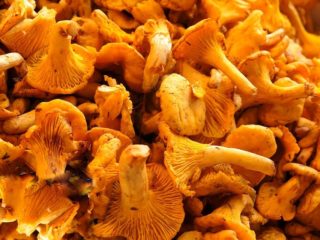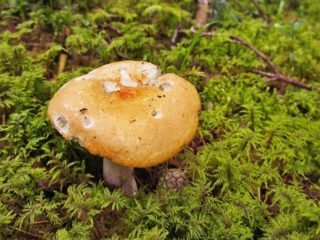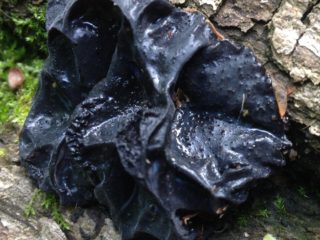Content
Svinushki are popular mushrooms growing in America, Europe, and Russian regions. They come in several varieties that differ in size, shape and color. Whether pig mushrooms are edible or not is something every mushroom picker needs to know.
Varieties of pig mushrooms
The genus Svinushka unites mushrooms of the Svinushka family. In the scientific literature they are called Paxillus, which means “a bag, a small amount.” The definition of a pig is due to the fact that the shape of the caps of young specimens is similar to the snout of a pig. Other names were also common among the people - solokha, pig, cowshed. In total, the genus includes 35 species.
The most common types of pigs:
- Thin. Previously, it was considered conditionally edible, but according to the modern classification it is classified as poisonous. Because of this circumstance, it is also called a false pig. The cap, up to 15 cm in size, is fleshy, straight, with a small funnel in the center. Its edges are drooping and wavy. On the reverse side the cap is lamellar. Its color is brown or brown. The pulp is dense, soft, and becomes loose as the fruiting body grows. The leg is low, up to 9 cm, brown or brown in color.
- Fat. A rather rare species that is found in the temperate zone of Europe. It has a clearly defined cap measuring 5 - 15 cm, convex, hemispherical in shape. Its central part is slightly depressed. The surface is dry, velvety to the touch, brown or ocher. The length of the leg reaches 12 cm, the girth is 5 cm. The flesh of the mushroom is whitish, odorless. The variety is considered conditionally edible. It is consumed as food after heat treatment.
- Alder. A poisonous species that is found in many countries in Europe. It enters into a symbiotic relationship with alder, which is how it gets its name. The cap has a slightly pronounced funnel-shaped shape. Its color ranges from yellow to reddish-brown. The outer surface is dry and has pronounced cracks. The pulp is dense, odorless, and becomes looser as it grows. The stem is thin, up to 1.5 cm thick and no more than 5 cm long. The fruiting body tapers from top to bottom.
- Ear-shaped. The variety grows in coniferous forests. It is collected on the territory of Kazakhstan and Russia. The cap of its representatives is hard, up to 15 cm in size. The stem is small, in some specimens it is not clearly expressed. The hat is shaped like a fan, sometimes resembling a shell in appearance. The edges are torn, with numerous teeth. The velvety surface gradually becomes smoother. Its color is reddish, brown or yellowish. Inside the fruit body is light, dense, rubber-like.;Attention! The eared pig contains few toxins, but they pose a health hazard. Therefore, the variety is not used for food.
- Ammonia, or Paxillus ammoniavirescens. A poisonous, dangerous species that is found in Western Europe and North Africa.It is common in coniferous forests, gardens, and city parks. The fruiting body of representatives of this variety is up to 10 cm high. Their cap is dense, fleshy, brown in color with a diameter not exceeding 12 cm. Active growth of the crop begins in the fall.
- Paxillus obscurisporus. These mushrooms grow from spring to late autumn. They prefer coniferous and deciduous forests. They have a characteristic light brown cap with a golden tint. Its edges are raised and wavy. The cap size is from 5 to 14 cm. The pulp is beige and has a pleasant aroma. The stalk, gray or yellow in color, tapers from the cap to the ground, its diameter is up to 8 cm.
- Filamentous, or Paxillus rubicun The variety is distinguished by the shape of its cap - funnel-shaped, up to 15 cm in size. Its surface is smooth, velvety to the touch. Color: brown, yellowish, gray or ocher. White flesh with a brown undertone. The yellowish leg, no more than 10 cm high, has the shape of a cylinder. The plates of the mushroom are numerous, yellow in color, with a reddish or brown tint. This variety is common in European countries.
- Paxillus vernalis, or spring pigwort. The mushroom grows in North America, next to birch or aspen trees. In Europe it is found in Denmark, England, Estonia. Prefers mountainous areas. Its cap is convex, smooth or slightly rough. The color is varied, brown or yellow tones predominate. The leg is up to 9 cm high and has a girth of 2 cm.
What does a pig mushroom look like?
According to the photo and description, the svinushka mushroom looks a little like a milk mushroom. Its stem is not large, no more than 9 cm long. Its thickness is about 2 cm. The stem has a color similar to the cap.
The structure of the cap is fleshy, powerful, round or elongated in shape.Its size is 12 - 15 cm. In the largest representatives, the cap grows up to 20 cm. In young specimens it is convex, gradually becoming thicker and concave. At the same time, its wavy edges are bent down.
The cap has a variety of colors: yellow, greenish, reddish, brown, gray, brown. The color changes as the fruiting body grows: from muted light shades to rich dark ones. On the reverse side the cap is light gray, with a yellowish or brown tint. Its surface is rough to the touch, but after long rains it becomes sticky.
Where pigs grow
Pigs are found in the temperate climate zone. They prefer deciduous, coniferous, mixed forests. They are found in clearings and forest edges, the edges of roads, ravines, and swamps. Often these mushrooms enter into symbiosis with pine, alder, birch, and aspen. The species grows next to fallen and rotting trunks, singly or in large groups.
To find an edible species - the fat pig - first of all they check the stumps and trees. The mushroom is more often found near pine trees and stumps covered with moss. Fruiting bodies develop under two conditions: high humidity and high temperature. In dry summers in the absence of precipitation, the mushroom yield is significantly reduced.
When are the pigs collected?
Pigs have a long growth period. They appear from early June to late October. Their mass development begins towards the end of autumn. These mushrooms appear in large numbers at the end of August.
Mushrooms that look like pigs
Thick pig has characteristic features that distinguish it from other mushrooms.It is almost impossible to find poisonous varieties that resemble it.
In terms of external characteristics, the following mushrooms are closest to the fat pig:
- Girodon. This edible variety consists of a cap measuring up to 12 cm and a long stem. The color of the representatives is brown with a yellow or red tint. Their pulp is dense, yellow, odorless and tasteless. They grow singly or in groups in summer or autumn.
- Polish mushroom. Belongs to the Borovik genus. Its cap, up to 15 cm in size, is convex or flat. Its surface is brown and slightly sticky. The pulp is dense, white or yellow. The crop grows next to pines, spruces, and chestnuts and is classified as edible. The collection period is from June to November.
- Podolshanik. A tubular mushroom that is classified as edible. Its cap, up to 10 cm in size, is convex and sticky. Its color is ocher or grayish. The leg is up to 7 cm long and has the shape of a cylinder, gray or brown. The pulp is light yellow. The species is rare, mainly preferring deciduous forests where alder grows.
Is it possible to eat pig mushrooms?
According to reviews, svinushka mushrooms, which grow in many regions of Russia, are eaten. This applies to only one variety - the fat pig. Before use, it is boiled over low heat. The broth must be drained, as it contains toxins. Then the resulting mass is washed with clean water.
An edible fat pig is not considered a delicacy. It is classified as a low quality mushroom. The taste and aroma of the pulp are rated as mediocre. However, this variety has beneficial properties. It contains atromenthin. It is a brown pigment that is used as an antibiotic.It is used to produce polyporic acid, a drug used to fight tumors.
Pig also contains telephoric acid. It has a blue color, so it is actively used as a dye. Most often, the pigment is used to dye wool thread.
Why are pigs considered poisonous?
Thin, poisonous pigs are the most dangerous to health. Previously, they were classified as conditionally edible. Their use in food after heat treatment was allowed. Since 1981 they have been excluded from this list.
Officially, fat pig is not recommended for collection, processing and sale. The pulp contains an antigen, which, when ingested, accumulates in the blood. At elevated concentrations, a person experiences an allergic reaction. The body produces antibodies that cannot cope with the antigen.
The body's reaction to pigs is individual and unpredictable. Excessive consumption increases the risk of developing anemia and kidney failure. This carries a risk of death. For some people, consuming these mushrooms is completely safe. For others, even a small amount can lead to irreversible consequences.
The danger of pigs is that they accumulate harmful substances in the pulp. Therefore, it is not recommended to collect mushrooms that grow near factories, industrial zones and cities. Accumulated harmful substances are not removed from the pulp even during prolonged cooking. When eaten, they enter the human body.
In case of pig poisoning, the first symptoms appear within 30 - 40 minutes.First, a general malaise appears: vomiting, fever, diarrhea, abdominal pain, high sweating. Then the victim experiences pale skin, jaundice, and increased hemoglobin. In severe cases, complications are diagnosed: damage to the feeding, circulatory and respiratory systems.
In case of poisoning, you should call a doctor. Then the victim is given first aid:
- give activated carbon or other sorbent to drink;
- induce vomiting and perform gastric lavage;
- Make sure that the patient drinks more warm water.
The patient is taken to the toxicology department. To reduce the autoimmune reaction, take special antihistamines. The rehabilitation period takes several weeks.
Conclusion
Whether pig mushrooms are edible or not is still a matter of debate. When collecting representatives of this species, pay attention to the size or color of the caps. This way you can separate poisonous specimens from edible ones. Before consumption, the fruiting bodies are heat treated to remove toxins. In case of poisoning, consult a doctor immediately.
